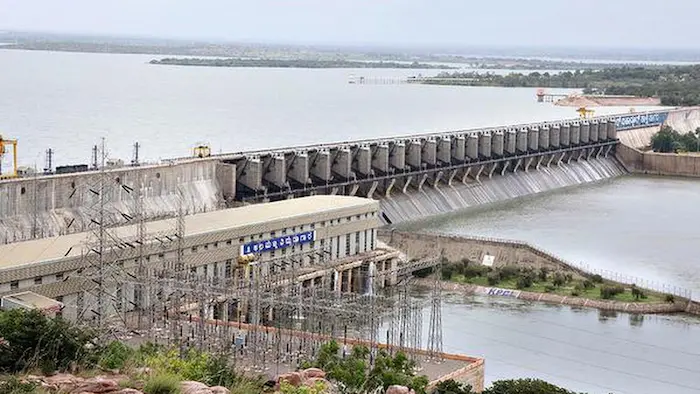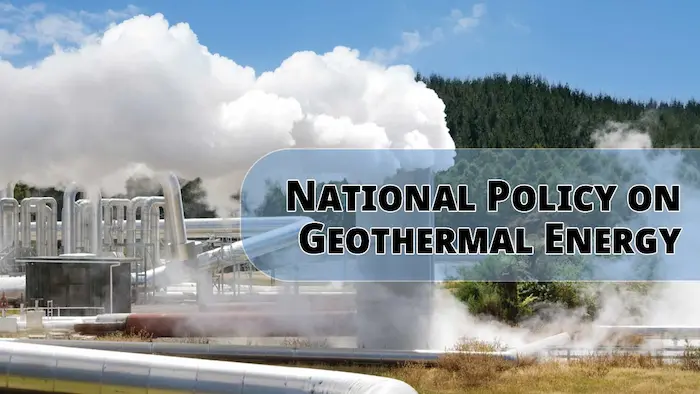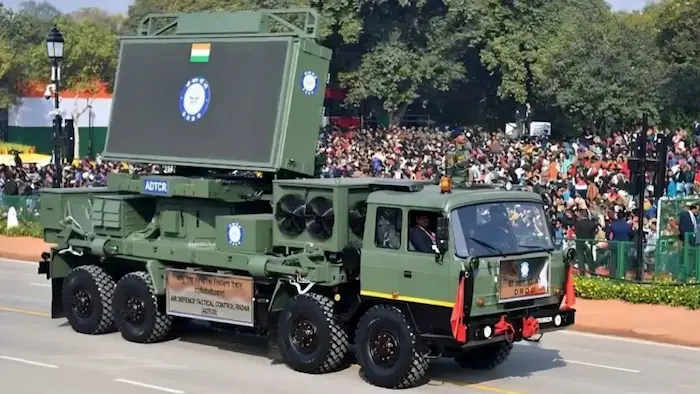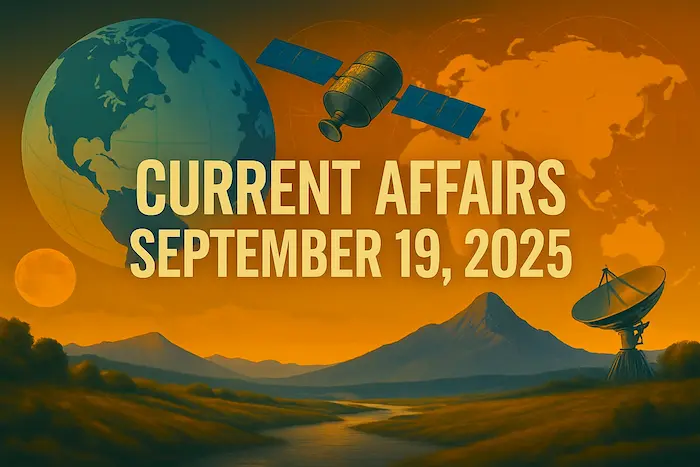1. Almatti Dam & Upper Krishna Project Phase-III – Economy

Why in News?
The Karnataka government has approved the Upper Krishna Project (UKP) Phase-III, which proposes to raise the height of the Almatti Dam. This move has drawn opposition from Maharashtra, which has expressed concerns about submergence of land and reduced water availability, and may seek legal recourse.
Key Concerns: Maharashtra’s Objections
- Submergence Risk: Villages and agricultural land in Maharashtra may get submerged due to increased water storage.
- Water Scarcity: Fears of reduced downstream water flow impacting irrigation and drinking water projects in Maharashtra.
- Legal Dispute: Potential violation of inter-state river water sharing agreements.
About Almatti Dam
| Parameter | Details |
|---|---|
| River | Krishna River (flows eastward) |
| Location | Northern Karnataka |
| Purpose | Irrigation, hydroelectric power, flood control, drinking water |
| Completion | July 2005 (as part of UKP) |
| Height | 52.5 meters |
| Length | 3.5 kilometers |
| Power Capacity | 290 MW |
| Turbines | 5 units of 55 MW + 1 unit of 15 MW (Vertical Kaplan turbines) |
| Powerhouses | Almatti I and Almatti II (release water to Narayanpur Reservoir) |
Back2Basics: Krishna River System
| Feature | Details |
|---|---|
| Origin | Near Mahabaleshwar, Western Ghats (Maharashtra) |
| Length | ~1,300 km (2nd longest in Peninsular India) |
| States Covered | Maharashtra (303 km), Karnataka (480 km), Telangana, Andhra Pradesh |
| Mouth | Bay of Bengal |
| Right-Bank Tributaries | Ghatprabha, Malprabha, Tungabhadra |
| Left-Bank Tributaries | Bhima, Musi, Munneru |
| Key Projects | Koyna, Tungabhadra, Srisailam, Nagarjuna Sagar, Almatti, Narayanpur, Bhadra |
Contextual Significance
- Inter-State Water Disputes: Almatti is a case study in the challenges of cooperative federalism.
- Balancing Development & Sustainability: Infrastructure expansion (dam height) vs. environmental and social impact.
- Role in Agriculture: Water from Almatti supports irrigated agriculture in arid zones of North Karnataka.
- Legal Backdrop: Subject to Krishna Water Disputes Tribunal decisions.
Exam Connect – Possible Questions
Prelims
1. Almatti Dam is constructed on which of the following rivers?
A. Godavari
B. Krishna
C. Bhima
D. Tungabhadra
Answer: B. Krishna
2. Which of the following is a left-bank tributary of the Krishna River?
A. Ghatprabha
B. Tungabhadra
C. Bhima
D. Malprabha
Answer: C. Bhima
Mains
1. Discuss the inter-state implications of the Upper Krishna Project Phase-III with reference to the federal structure and water-sharing agreements in India.
2. Examine the socio-economic and environmental implications of raising the height of multipurpose dams like Almatti. Suggest measures for balancing development and ecological sustainability.
2. New National Geothermal Energy Policy – Science & Technology

Why in News?
The Government of India has launched a National Geothermal Energy Policy to assess the commercial viability of geothermal technology. The initiative has drawn interest from international companies (USA, Iceland, Norway) and is focusing on pilot projects in:
- Gulf of Cambay (Gujarat)
- Arunachal Pradesh
- Uttarakhand
Key Takeaways
- Geothermal Energy taps into the Earth’s internal heat for electricity generation, heating, and other applications.
- Estimated Potential in India: 10.6 GW
- Innovative approach: Repurposing abandoned oil wells for geothermal use.
- Supportive ecosystem for R&D and pilot projects, with foreign collaboration.
What is Geothermal Energy?
Definition: Geothermal energy is heat derived from within the Earth, typically from geothermal reservoirs of hot water or steam located beneath the Earth’s crust.
Process of Geothermal Electricity Generation
- Extraction: Drilling deep wells into geothermal reservoirs.
- Conversion: Hot water or steam is brought to the surface.
- Turbine Operation: The steam rotates turbines connected to electricity generators.
- Reinjection: Cooled water is pumped back into the Earth to maintain pressure and sustainability.
Geothermal Potential in India
- Identified Sites: Geological Survey of India (GSI) has mapped 381 hot springs with surface temperatures ranging from 35°C to 89°C.
- Major Geothermal Provinces:
- Himalayan Province (e.g. Ladakh, Himachal, Uttarakhand)
- Cambay Graben (Gujarat)
- Sohana, Godavari, and Mahanadi basins
Challenges
| Challenge | Explanation |
|---|---|
| High Capital Cost | Estimated ₹36 crore per MW – expensive compared to solar or wind |
| Exploration Risk | Uncertainty in locating viable geothermal reservoirs |
| Limited Awareness & Technology | Lack of trained personnel and indigenous tech solutions |
| Geographical Limitation | Sites often located in remote, ecologically sensitive zones |
Potential Benefits
- Reliable & Clean Energy: Base-load, 24/7 power unlike solar/wind.
- Low Operating Cost: After initial investment, operational costs are minimal.
- Ideal for Remote Areas: Can reduce electricity costs in:
- Andaman & Nicobar Islands
- Ladakh
- North-Eastern States
- Low Carbon Footprint: Promotes sustainable development goals (SDGs)
International Collaborations
- Firms from Iceland, USA, and Norway are investing in:
- Enhanced Geothermal Systems (EGS)
- Technology transfer & knowledge sharing
- Pilot testing and field surveys
Exam Connect – Possible Questions
Prelims
1. Which of the following statements about geothermal energy is correct?
A. It is a form of non-renewable energy.
B. It can only be used in volcanic regions.
C. It provides base-load power and has low emissions.
D. India has no significant geothermal potential.
Answer: C. It provides base-load power and has low emissions.
2. The Cambay Graben, known for its geothermal potential, is located in which Indian state?
A. Rajasthan
B. Gujarat
C. Maharashtra
D. Odisha
Answer: B. Gujarat
Mains
1. Discuss the significance of geothermal energy in India’s renewable energy mix. What are the major challenges in its implementation? Suggest policy-level interventions.
2. Examine the role of geothermal energy in achieving energy security and sustainability in remote and high-altitude areas like Ladakh and Andaman & Nicobar Islands.
3.Swasth Nari, Sashakt Parivar Abhiyaan (SNSPA) – Governance
Why in News?
On September 17, 2025, the Prime Minister launched the Swasth Nari, Sashakt Parivar Abhiyaan (SNSPA) during the 8th edition of Rashtriya Poshan Maah, reaffirming the government’s focus on improving health and nutrition outcomes for women, children, and families, especially in rural and tribal areas.
Key Features of SNSPA
| Component | Details |
|---|---|
| Ministries Involved | Ministry of Health and Family Welfare & Ministry of Women and Child Development |
| Coverage | Rural, tribal, and underserved regions |
| Health Camps | Over 10 lakh health camps to be organized across India |
| Digital Monitoring | Real-time tracking via the SASHAKT Portal for transparency and coordination |
| Community Participation | Collaboration with Self-Help Groups (SHGs), Anganwadis, local panchayats, and private hospitals |
Health Services & Screening Focus
- Targeted Diseases/Conditions:
- Anaemia
- Hypertension
- Diabetes
- Tuberculosis (TB)
- Breast & Cervical Cancer
- Sickle Cell Disease
- Reproductive health disorders
- Comprehensive Maternal & Child Services:
- Antenatal & postnatal care
- Immunization & nutrition counselling
- Menstrual hygiene management
- Mental health support
- Lifestyle and preventive health awareness
Special Focus on Tribal Areas
- Deployment of specialized medical teams for remote tribal communities
- Culturally appropriate health education & counselling
- Coordination with tribal health workers and community leaders
Back2Basics: Rashtriya Poshan Maah – 2025 (8th Edition)
| Feature | Description |
|---|---|
| What is it? | Annual month-long nutrition drive under POSHAN Abhiyaan (National Nutrition Mission) |
| Started in | 2018 |
| Objective | Community mobilization to improve nutrition for children, pregnant/lactating women, and adolescent girls |
| Major Activities | Poshan Panchayats, health camps, recipe demonstrations, school outreach, nutri-gardens |
| Key Focus Areas (2025): | 1.Anaemia Mukt Bharat 2.Awareness on micronutrient deficiencies 3. Complementary feeding for infants 4. Poshan-Vatika (nutri-gardens) for household nutrition 5.Promotion of traditional & regional diets | |
Significance of SNSPA & Rashtriya Poshan Maah
- Addresses the triple burden of malnutrition – undernutrition, micronutrient deficiency, and overnutrition
- Integrates nutrition with maternal and child health, mental wellness, and lifestyle choices
- Strengthens grassroots governance and health infrastructure
- Leverages technology for transparency (SASHAKT Portal)
- Promotes community ownership of health programs
Exam Connect – Possible Questions
Prelims
1. Swasth Nari, Sashakt Parivar Abhiyaan (SNSPA), recently launched by the Government of India, primarily focuses on:
A. Education and skill development of rural women
B. Comprehensive health and nutrition services for women and children
C. Financial inclusion of tribal households
D. Promotion of traditional medicine among women
Answer: B. Comprehensive health and nutrition services for women and children
2. Consider the following statements regarding Rashtriya Poshan Maah:
1.It is a fortnight-long event organized annually by the Ministry of AYUSH.
2.It aims to mobilize communities for improved nutrition of adolescent girls and pregnant women.
3.It promotes the establishment of Poshan-Vatika for household-level nutrition security.
Which of the statements is/are correct?
A.2 and 3 only
B. 1 and 2 only
C.1 only
D.1, 2 and 3
Answer: A. 2 and 3 only
Mains
1. “Health and nutrition are fundamental to human capital development.” In light of this, critically examine the significance of initiatives like the Swasth Nari, Sashakt Parivar Abhiyaan (SNSPA) and Rashtriya Poshan Maah.
2. Discuss the importance of digital governance tools such as the SASHAKT Portal in the effective implementation of large-scale public health missions in India.
4. Upgradation of Army Radars & Air Defence Infrastructure – Defence & Security

Why in News?
In response to recent incidents like Operation Sindoor and Pakistani drone incursions, the Indian Army is upgrading its air defence radars to counter emerging aerial threats, especially low-RCS (Radar Cross-Section) drones. This is part of a broader modernization of India’s integrated air defence system along the northern and western borders.
Key Takeaways
- The radar upgrade is focused on detecting small, low-flying drones and stealth aerial vehicles.
- These radars are critical for providing real-time data to ground-based weapon systems.
- Integration with missile systems, command centres, and communication networks is underway for enhanced battlefield coordination.
What are Radars? – Basic Science
RADAR = Radio Detection and Ranging
| Component | Function |
|---|---|
| Transmitter | Emits radio waves toward the target |
| Receiver | Captures the waves that bounce back (echoes) |
| Processor | Calculates object distance, direction, and velocity |
How it Works:
- Time delay between transmission and reception = Distance
- Doppler shift in frequency = Object’s velocity
- Angle of arrival = Direction
Types of Air Defence Radars
| Radar Type | Purpose |
|---|---|
| Surveillance Radars | Long-range detection of all airborne objects (e.g., aircraft, drones) |
| Fire Control Radars | Provide precise targeting data to guide anti-aircraft guns or missiles |
| Low-Level Radars | Track low-altitude threats like drones and cruise missiles |
| Tactical Control Radars | Integrate with weapon systems for quick response and local defence |
Current Indian Capabilities
Indian Air Force (IAF)
- Operates high-power radars for detecting fighter jets, AWACS, and ballistic missiles.
- Notable Systems:
- 3D Central Acquisition Radar (CAR)
- Rajendra Radar (for Akash missile system)
- Uses Integrated Air Command and Control System (IACCS) for real-time coordination.
Indian Army
- Focused on low-level, mobile radars for tactical battlefield air defence.
- Systems in Use:
- Flycatcher Radar (Fire control radar for short-range systems)
- Low-Level Light Weight Radar (LLLWR) for drone detection
- Part of integrated systems like Akashteer and Sudarshan Chakra
India’s Air Defence Architecture
| System | Features |
|---|---|
| S-400 | Russian long-range SAM system; range ~400 km |
| Akash Missile System | Indigenous surface-to-air missile system; range ~25-30 km |
| Akashteer | Army Air Defence’s automation system to link radars, missiles, and guns |
| IACCS (IAF) | Centralized air defence control system using AI and multi-sensor fusion |
| Mission Sudarshan Chakra | DRDO-led program to modernize air defence weapons and radar systems |
| Integrated Air Defence Weapon System | Undergoing trials for deployment; integrates missiles, radars, and ECM systems |
Strategic Significance
- Counters drone warfare, saturation attacks, and stealth aircraft
- Enhances India’s multi-layered air defence shield
- Crucial for border security, especially in Punjab, J&K, and Rajasthan sectors
- Supports network-centric warfare, enabling faster decision-making
- Reflects shift towards indigenous systems and Atmanirbhar Bharat
Exam Connect – Possible Questions
Prelims
1. Which of the following radar systems is used by the Indian Army for detecting low-flying drones?
A. Rajendra Radar
B. Flycatcher Radar
C. S-400 Radar
D. Green Pine Radar
Answer: B. Flycatcher Radar
2. The Integrated Air Command and Control System (IACCS) is primarily associated with which of the following?
A. Missile manufacturing
B. Airspace coordination and threat interception
C. Nuclear command
D. Border road surveillance
Answer: B. Airspace coordination and threat interception
Mains
1. Discuss the significance of modernizing India’s air defence radar infrastructure in the context of emerging aerial threats like drones and stealth aircraft.
2. Examine the role of indigenous radar and air defence systems in strengthening India’s national security. Evaluate the progress and limitations of initiatives like Akashteer and Mission Sudarshan Chakra.
5. Bima Sugam: India’s Digital Insurance Marketplace – Governance

Why in News?
Bima Sugam, envisioned as the world’s largest digital insurance platform, was officially launched by the Bima Sugam India Federation (BSIF) at the IRDAI headquarters in Hyderabad.
It will be rolled out in phases — beginning as an information and guidance portal, with full-fledged transactions to follow after integration by insurers and intermediaries.
Objective
To create a unified, transparent, and accessible digital infrastructure that simplifies the entire insurance lifecycle — from purchase and renewal to claims and grievance redressal — under the national vision of “Insurance for All by 2047” (Viksit Bharat 2047).
Key Takeaways
| Feature | Description |
|---|---|
| Bima Sugam | A unified digital insurance platform to buy, manage, and claim insurance |
| Goal | Increase insurance penetration by ensuring availability, affordability, and accessibility |
| Equity Participation | All insurance companies to be members, many holding equity stakes in BSIF |
| Transaction Fees | Minimal charges to promote adoption and inclusivity |
| Rollout Model | Phased implementation to allow ecosystem adaptation |
| Database Role | Acts as a centralised digital repository for policy information and innovation support |
Bima Trinity – Three Pillars of Inclusive Insurance
| Component | Role |
|---|---|
| Bima Sugam | Digital marketplace and policy management platform |
| Bima Vistaar | A low-cost, comprehensive insurance product covering health, life, accident, etc. |
| Bima Vahak | Women-led field distribution force to reach rural and remote areas |
How Bima Sugam Works
- Accessible via web and mobile
- Functions:
- Compare and purchase policies
- Renew and manage policies from multiple insurers
- File claims and track grievance redressal
- Access consolidated policy records in one place
- Inspired by the success of UPI in democratizing digital payments
Bima Sugam as Digital Public Infrastructure (DPI)
- Aligns with India’s broader DPI vision alongside:
- UPI (Unified Payments Interface) – for payments
- DigiLocker – for document storage
- ONDC – for e-commerce
- Empowers policyholders through transparency, ease of access, and standardization
- Supports innovation and customized products by giving insurers access to rich datasets
Relevance to Governance & Financial Inclusion
- Tackles low insurance coverage in India (penetration <4% of GDP)
- Supports SDG Goal 1 (No Poverty) and Goal 3 (Good Health & Wellbeing)
- Aims to make insurance a right, not a privilege
- Reduces information asymmetry and middleman dependency
- Boosts trust in the insurance ecosystem
Exam Connect – Possible Questions
Prelims
1. Which of the following correctly describes the “Bima Sugam” platform recently launched in India?
A. A scheme to provide free health insurance to senior citizens
B. A centralized digital platform for managing and purchasing insurance policies
C. A new mobile app for tracking inflation
D. A government portal for availing agricultural subsidies
Answer: B. A centralized digital platform for managing and purchasing insurance policies
2. Consider the following pairs:
| Component | Description |
|---|---|
| Bima Sugam | Digital insurance marketplace |
| Bima Vistaar | Women-led insurance sales force |
| Bima Vahak | Comprehensive bundled insurance product |
Which of the pairs are correctly matched?
A. 1 and 2 only
B. 1 and 3 only
C. 1 only
D. All three
Answer: C. 1 only
(Correct matching: Bima Vistaar = bundled product, Bima Vahak = women-led distribution)
Mains
1. “Digital public infrastructure is transforming financial inclusion in India.” Discuss the role of initiatives like Bima Sugam in achieving inclusive and transparent insurance coverage across the country.
2. Evaluate the potential of Bima Sugam as a game-changer in India’s insurance ecosystem. What challenges must be addressed to ensure its success?
6. Article 200 and Judicial Intervention in Legislative Process – Polity
Why in News?
Recent judicial pronouncements in State of Punjab vs Principal Secretary to the Governor (2023) and State of Tamil Nadu vs The Governor of Tamil Nadu (2025) have intensified the debate over the Governor’s role in the legislative process under Article 200.
The Supreme Court has now set a three-month deadline for the Governor and President to act on Bills passed by the legislature, aiming to prevent legislative paralysis.
Key Takeaways
| Issue | Development |
|---|---|
| Governors delaying Bills | Governors were indefinitely delaying assent to Bills, leading to constitutional deadlock |
| SC’s Judicial Nudge | Supreme Court imposed a three-month deadline to act on Bills, reinforcing constitutional accountability |
| Article 200’s Scope | Grants Governor four options, but not infinite discretion |
| Core Principle | Governor must act on advice of Council of Ministers, not independently |
| Debate Triggered | Tension between judicial activism and executive domain (Judicial Overreach vs Constitutional Safeguard) |
Understanding Article 200 – Governor’s Role with State Bills
When a Bill is passed by a State Legislature, the Governor has four options:
- Give Assent – The Bill becomes law.
- Withhold Assent – Bill is rejected.
- Return the Bill (not for money Bills) – For Legislature to reconsider.
- Reserve the Bill for the President’s Consideration – Especially if it may conflict with Union laws or is of national interest.
Note: The Constitution does not prescribe a time limit — which has led to governors stalling key legislation.
Judicial Precedents & Constitutional Interpretation
| Case | Verdict Summary |
|---|---|
| Shamsher Singh v. State of Punjab (1974) | Governors are constitutional heads, bound by aid and advice of Council of Ministers |
| Nabam Rebia v. Deputy Speaker (2016) | Governor cannot act independently in legislative matters |
| State of Punjab (2023) & Tamil Nadu (2025) | SC mandates a three-month window for decision on Bills to avoid misuse of Article 200 |
Why Is This Important?
- Strengthens Cooperative Federalism: Reinforces the subordinate role of the Governor to the elected government
- Promotes Democratic Values: Prevents executive obstruction of legislature’s will
- Constitutional Morality: Encourages functionaries to act within the spirit of the Constitution
- Ensures Efficiency in Governance: Prevents indefinite delays that stall welfare and development initiatives
Concerns Raised
- Judicial Overreach? Critics argue the Supreme Court is creating timelines not explicitly mentioned in the Constitution.
- Breakdown in Political Accountability: Judicial intervention reflects a failure of constitutional functionaries to act responsibly.
- Ambiguity in Discretionary Powers: Ongoing debate on whether Governors are misusing their residual powers.
Exam Connect – Possible Questions
Prelims
1. Under Article 200 of the Indian Constitution, the Governor of a State can:
1.Give assent to a Bill
2.Withhold assent
3.Return a Money Bill for reconsideration
4.Reserve the Bill for the President’s consideration
Which of the above is/are correct?
A. 1, 2 and 4 only
B. 1, 2 and 3 only
C. 1, 3 and 4 only
D. All of the above
Answer: A. 1, 2 and 4 only
(Money Bills cannot be returned for reconsideration)
2. Which of the following Supreme Court judgments dealt with the Governor’s discretionary powers and emphasized action based on the advice of the Council of Ministers?
A. Golaknath Case (1967)
B. Shamsher Singh v. State of Punjab (1974)
C. Kesavananda Bharati v. State of Kerala (1973)
D. ADM Jabalpur v. Shivkant Shukla (1976)
Answer: B. Shamsher Singh v. State of Punjab (1974)
Mains
1. The Governor is a constitutional head but recent events suggest a shift in this role. Examine the implications of indefinite delays in assenting to Bills and evaluate the Supreme Court’s intervention in maintaining legislative sanctity.
2. Critically analyze the balance of powers between the executive and the judiciary in the context of the Supreme Court’s directive limiting the Governor’s discretion under Article 200.

